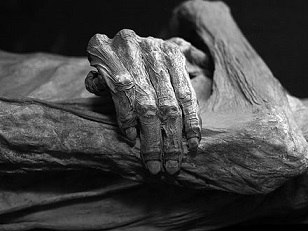
Egyptian mummy courtesy of wikipedia.com
Perhaps, my mother’s passing colors my reaction to the current demonstrations for racial and economic equality. I continue to see the need for change, but when Death takes the center stage, it presents a standard that when measured against the demonstrations makes the latter seem like a distraction, one that leads us away from our objective.
True, when we demonstrate, lifting our voices in protests with others, we feel a part of a larger force. The sense of unity we experience may be intoxicating, but it can spring from anger, not love. The latter requires no mass movements. It is a quiet force that resides within us.
Unlike love, the righteous desire of a mass movement risks leading us toward intolerance. Consider the Inquisition. Zealots whose intent was to save souls tortured men, women, and children until their bodies were beyond human recognition.
The current demonstrations largely have been peaceful. Even so, anger supplies much of the fuel. That knowledge leads me to wonder if chanting is enough to lance a cultural wound? Or will bloodletting become necessary?
As a species, we are acquainted with violence. Seldom does it achieve the expected result, however. Are we not fighting our Civil War to this day?
Mass movements can change the outward appearance of society. That much we know. But they do not change the human heart. That much we know, also. Compassion, kindness, and love arise not from demonstrations but from shifts within ourselves.
That’s why I say Death teaches a lesson we would be wise to learn. Silence the ego a moment and we hear its message: all that we strive for and all that we achieve is dust. Like wind and water, we come and go. How much better life would be if we spent our little spark of consciousness to comfort one another.
